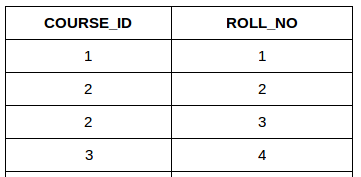SQL | Join (Cartesian Join & Self Join)
Last Updated :
11 Sep, 2023
SQL| JOIN(Inner, Left, Right and Full Joins)
In this article, we will discuss about the remaining two JOINS:
Consider the two tables below:

StudentCourse

- CARTESIAN JOIN: The CARTESIAN JOIN is also known as CROSS JOIN. In a CARTESIAN JOIN there is a join for each row of one table to every row of another table. This usually happens when the matching column or WHERE condition is not specified.
- In the absence of a WHERE condition the CARTESIAN JOIN will behave like a CARTESIAN PRODUCT . i.e., the number of rows in the result-set is the product of the number of rows of the two tables.
- In the presence of WHERE condition this JOIN will function like a INNER JOIN.
- Generally speaking, Cross join is similar to an inner join where the join-condition will always evaluate to True
Syntax:
SELECT table1.column1 , table1.column2, table2.column1...
FROM table1
CROSS JOIN table2;
table1: First table.
table2: Second table
Example Queries(CARTESIAN JOIN):
- SELF JOIN: As the name signifies, in SELF JOIN a table is joined to itself. That is, each row of the table is joined with itself and all other rows depending on some conditions. In other words we can say that it is a join between two copies of the same table.Syntax:
SELECT a.coulmn1 , b.column2
FROM table_name a, table_name b
WHERE some_condition;
table_name: Name of the table.
some_condition: Condition for selecting the rows.
Example Queries(SELF JOIN):
SELECT a.ROLL_NO , b.NAME
FROM Student a, Student b
WHERE a.ROLL_NO < b.ROLL_NO;
Output:

Like Article
Suggest improvement
Share your thoughts in the comments
Please Login to comment...